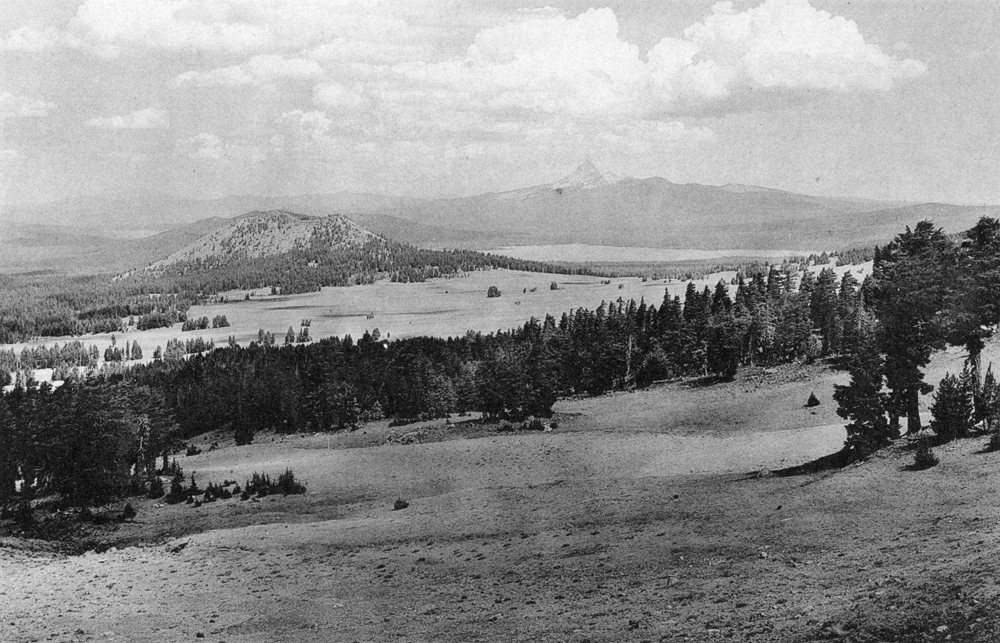The Geology of Crater Lake National Park, OregonWith a reconnaissance of the Cascade Range southward to Mount Shasta by Howell Williams
The Parasitic Scoria Cones of Mount Mazama
The Younger Cones
Red Cone
This is the best preserved, the largest, and probably the youngest of the three northern cones (plate 13, figure I). Much more lava escaped from this vent than from Desert Cone or Bald Crater. Not only do flows appear on the cone, along the south rim of the crater, and on its western wall, as well as on the north and east flanks, but thick tongues of vesicular basalt make up the prominent shoulder at the southeast base of the cone. Diller held the opinion that the lavas which extend westward from the cone beyond the boundaries of the park also issued from this source, but if they did it must have been long before the cone itself was built, for the lavas are largely concealed beneath glacial drift. None can deny the possibility, however, that Red Cone was formed by revival of activity at a vent long dormant.
|
Plate 13. Fig. 1. Looking north across the Pumice Desert. Mount Thielsen in the distance. All the country is covered by deposits of pumice and scoria flows from Mount Mazama. The conspicuous hill in the middle distance is Red Cone, a scoria parasite of Mount Mazama. (Photograph by George Grant, National Park Service.) |
For the geologist anxious to collect samples of various forms of volcanic bombs, Red Cone is a happy hunting ground. Here he may find ropy, ribbon, spiral, unipolar, and bipolar bombs, some as much as 8 feet in length. With these fragments there is much agglutinate, made up of lava clots that were sufficiently sticky when they fell so that they adhered to one another, and an abundance of fine scoriaceous ash. Angular and subangular fragments of old andesite and basalt represent materials torn from the sides of the conduit at depth and perhaps also from a floor of glacial drift. The shallow crater is breached on the north side.
Though the cone itself can never have been covered by ice, the lava ridge at its south base has evidently been glaciated. Accordingly, when the cone was formed the glaciers on the north slope of Mount Mazama cannot have extended far beyond the present rim of Crater Lake. The occurrence of pumice patches on the cone shows that it was already extinct when the final eruptions of Mount Mazama took place.
***previous*** — ***next***


